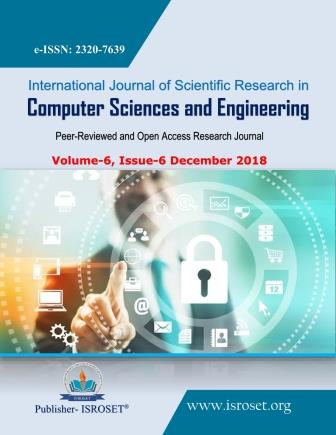Candidate Job Recommendation System
Keywords:
Data Mining, Naïve Bayes, Navicat Lite for MySQL, NetBeans IDEAbstract
In the modern world online jobs became the major component of recruitment industry. Candidate Job recommendation system is using to shortlist the candidate based on their resume and skills in which system are matching the students skill with the company requirement and suggesting companies name by analysing their Resume by using Naïve Bayes, where the selected student will get offer message and rejected student will get the feedback with resources to improve their skills. Company can also view the rank of selected student and download their Curriculum Vitae. Basically there are three phases Student, Admin, Company portal. Main aim of candidate job recommendation system is to analysing the CV and give job suggestion to the student and the resources and feedback to the rejected student. For this we are using data mining algorithm like Naïve Bayes.
References
Applying Data Mining Techniques in Job Recommender System for Considering Candidate Job Preferences. Anika Gupta, Dr. Deepak Garg Computer Science and Engineering Department Thapar University, Patiala, India.
M. Deshpande and G. Karypis, “Item-based top-n recommendation algorithms,” ACM Transactions on Information Systems (TOIS), vol. 22, no. 1, pp. 143–177, 2004.
B. Sarwar, G. Karypis, J. Konstan, and J. Riedl, “Item-based collaborative filtering recommendation algorithms,” in Proceedings of the 10th international conference on World Wide Web, pp. 285–295, ACM, 2001
G. Adomavicius and A. Tuzhilin, “Toward the next generation of recommender systems: A survey of the state-of-the-art and possibleextensions,” IEEE transactions on knowledge and data engineering, vol. 17, no. 6, pp. 734–749, 2005.
M. Li, B. M. Dias, I. Jarman, W. El-Deredy, and P. J. Lisboa, “Grocery shopping recommendations based on basket-sensitive random walk,” in Proceedings of the 15th ACM SIGKD, pp. 1215–1224, ACM, 2009.
G. Linden, B. Smith, and J. York, “Amazon. com recommendations: Item-to-item collaborative filtering,” IEEE Internet computing, vol. 7, no. 1, pp. 76–80, 2003.
A. S. Das, M. Datar, A. Garg, and S. Rajaram, “Google news personalization: scalable online collaborative filtering,” in Proceedings of the 16th international conference on World Wide Web, pp. 271–280, ACM, 2007.
S. Baluja, R. Seth, D. Sivakumar, Y. Jing, J. Yagnik, S. Kumar, D. Ravichandran, and M. Aly, “Video suggestion and discovery for youtube: taking random walks through the view graph,” in Proceedings of the 17th international conference on World Wide Web, pp. 895–904, ACM, 2008.
H. Yildirim and M. S. Krishnamoorthy, “A random walk method for alleviating the sparsity problem in collaborative filtering,” in Proceedings of the 2008 ACM conference on Recommender systems, pp. 131–138, ACM, 2008.
Downloads
Published
How to Cite
Issue
Section
License

This work is licensed under a Creative Commons Attribution 4.0 International License.
Authors contributing to this journal agree to publish their articles under the Creative Commons Attribution 4.0 International License, allowing third parties to share their work (copy, distribute, transmit) and to adapt it, under the condition that the authors are given credit and that in the event of reuse or distribution, the terms of this license are made clear.







